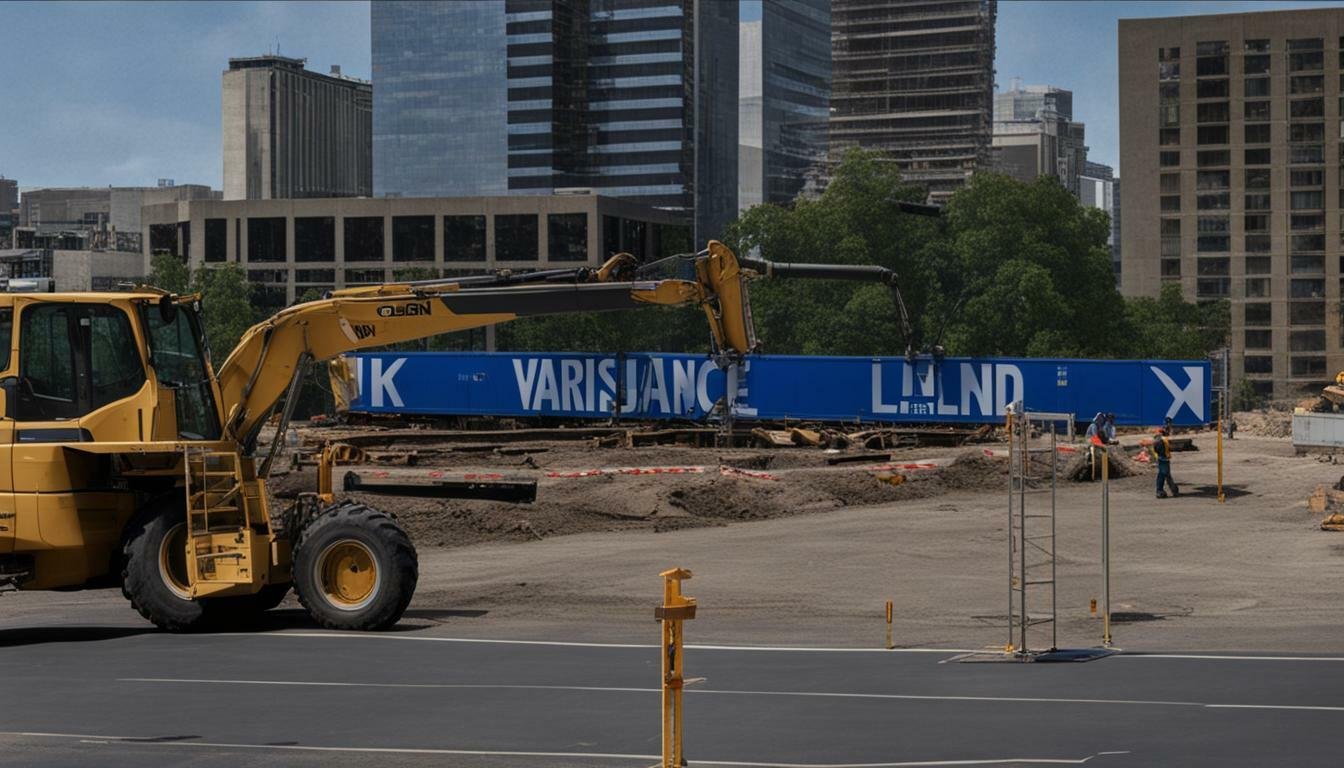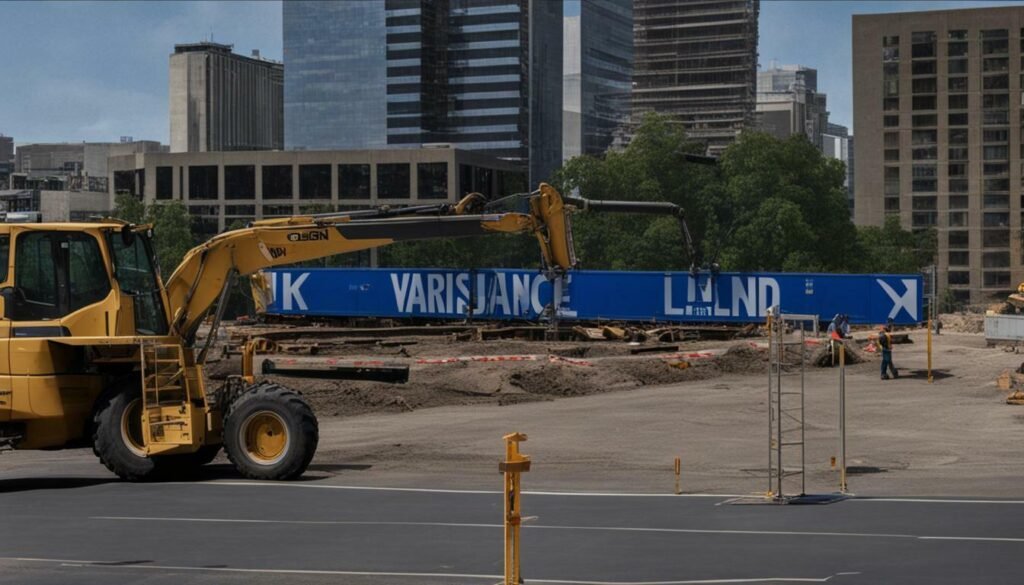 In the world of real estate, variances play a crucial role in property development. Understanding what a variance is and its significance within the US real estate market is important for property owners, investors, and developers. A variance refers to a modification of the established zoning regulations that govern property development. It allows property owners to deviate from the standard guidelines and customize their property to meet their specific needs.
In the world of real estate, variances play a crucial role in property development. Understanding what a variance is and its significance within the US real estate market is important for property owners, investors, and developers. A variance refers to a modification of the established zoning regulations that govern property development. It allows property owners to deviate from the standard guidelines and customize their property to meet their specific needs.
Variances are of great significance in property development as they can ultimately impact property values, neighborhood dynamics, and overall real estate market trends. Therefore, understanding the implications of variances within the US real estate market is crucial for anyone involved in the industry.
As we delve deeper into the concept of variances in real estate, we will examine their definition, types, and role in property development. We will also explore the factors that influence the approval or denial of a variance request and their impact on the development process. By the end of this article, we hope to provide readers with a comprehensive understanding of variances in real estate, empowering them to navigate this aspect of the market with knowledge and confidence.
Contents
- 1 Understanding Variance in Real Estate
- 2 The Role of Variance in Property Development
- 3 The Implications of Variance in the US Real Estate Market
- 4 Conclusion
- 5 FAQ
- 5.1 Q: What is a variance in real estate?
- 5.2 Q: Why is understanding variance important in real estate?
- 5.3 Q: What types of variances exist in real estate?
- 5.4 Q: How does a variance impact property development?
- 5.5 Q: What factors influence the approval or denial of a variance request?
- 5.6 Q: What are the implications of variances in the US real estate market?
Understanding Variance in Real Estate
Real estate is a complex and ever-evolving industry, and one term that frequently arises is “variance.” Understanding what a variance is and how it applies to real estate is crucial for those involved in the development or ownership of property.
A variance is a legal permission granted by a local government that allows property owners to deviate from established zoning regulations. The purpose of a variance is to enable property owners to use their land in a way that is not permitted by the current zoning laws.
There are different types of variances, including area variances and use variances. Area variances allow property owners to vary from the physical requirements of zoning laws, such as building height or setback. Use variances, on the other hand, permit property owners to use their land for purposes that are not explicitly allowed by zoning laws, such as a commercial property in a residential zone.
It is important to note that obtaining a variance is not an easy process. Property owners must demonstrate that they are suffering undue hardship due to zoning laws and that the variance will not have a negative impact on the surrounding area. The zoning board will then consider various factors, including the unique characteristics of the property, the impact on neighborhood character, and the potential impact on public health and safety.
Overall, understanding variances is an essential component of real estate development and ownership. Variances are an important tool that can allow property owners to use their land in a way that is not otherwise permitted by zoning laws.
The Role of Variance in Property Development
Variances play a crucial role in property development as they allow property owners to deviate from established zoning regulations and guidelines. A variance is a legal waiver granted by a local government that permits a property owner to use their land or property in a way that does not conform to the existing zoning rules. It is typically required when a property owner wishes to make changes to their property that would otherwise be prohibited by local zoning laws.
The primary role of a variance is to provide flexibility within the strict regulatory framework in order to enable property owners to develop their land more effectively. By obtaining a variance, property owners can modify the dimensions, setbacks, or uses allowed on their property, making it easier for them to realize their development plans.
Types of Variances
There are two main types of variances: use variances and area variances. Use variances allow property owners to use the land or property in a way that is not permitted by the zoning regulations. On the other hand, area variances allow property owners to deviate from the established property dimensions, such as setback requirements or maximum building heights.
The decision to grant a variance is made by the local government, which evaluates the request based on a variety of factors. These include the impact on neighboring properties, the existing zoning regulations, and the property owner’s development plans. The local government may grant a variance if they determine that not granting it would cause undue hardship to the property owner while having minimal impact on the surrounding community.
Overall, the role of variances in property development is crucial as they provide a means for property owners to achieve their development goals while still complying with local zoning regulations. The appropriate use of variances can lead to more efficient and effective use of land, which benefits both the property owner and the surrounding community.
The Implications of Variance in the US Real Estate Market
Variances have significant implications within the US real estate market, affecting property values, neighborhood dynamics, and overall market trends. Property owners who are granted variances can modify their property to meet their specific needs, potentially increasing their property’s value. At the same time, the ramifications of these changes can extend beyond the individual property to impact the surrounding area and community.
For example, a variance that allows a property owner to construct a higher building than the local zoning regulations permit can affect the community’s aesthetics and skyline. Furthermore, the increased traffic and population density resulting from the approved variance can strain local resources and infrastructure.
On the other hand, variances can also have positive implications on the real estate market. For instance, a property owner who receives a variance to operate a business from their residential property can boost the neighborhood’s economy, attracting potential buyers and renters to the area.
However, it is essential to note that variances can have drawbacks as well. For instance, if a single property owner receives a variance that goes against the established zoning regulations, other property owners within the same neighborhood may also request variances for their properties, leading to a ripple effect that can potentially change the community’s character.
In conclusion, understanding the implications of variances within the US real estate market is vital. Property owners must be aware of the potential benefits and drawbacks when seeking a variance, taking into account the potential impact on both their property and the surrounding area. At the same time, policymakers must weigh the potential benefits of granting variances against the negative effects they can have on the community.
Conclusion
In conclusion, variances play a crucial role in the world of real estate. As we have discussed, a variance allows property owners to deviate from the established zoning regulations and modify the development of their land. Understanding variances is essential for property developers and owners as it allows them to navigate the complex legal landscape of the real estate industry.
Moreover, variances have significant implications on the US real estate market. They can impact property values, neighborhood dynamics, and overall market trends. While variances can offer many benefits for property owners, they can also have drawbacks for the surrounding community. It is therefore essential to consider all factors when requesting a variance to ensure that it aligns with both personal and community goals.
Overall, variances are a potential solution to many of the issues and challenges that arise in property development. The ability to modify zoning regulations can lead to innovative developments and solutions. However, it is vital to approach variances with caution and consideration of all stakeholders involved in the development process.
FAQ
Q: What is a variance in real estate?
A: A variance in real estate refers to a permission granted by local authorities that allows property owners to deviate from certain zoning regulations or restrictions. It enables them to use their property in a way that is different from what is typically allowed under existing rules.
Q: Why is understanding variance important in real estate?
A: Understanding variance is crucial in real estate because it allows property owners and developers to navigate the complexities of zoning regulations. By knowing how variances work, they can explore opportunities for modifications or exceptions to these regulations, which can be beneficial for certain projects.
Q: What types of variances exist in real estate?
A: There are generally two types of variances in real estate: use variances and area variances. Use variances pertain to changes in the permitted use of a property, while area variances involve deviations from specific dimensional requirements such as setbacks or building height.
Q: How does a variance impact property development?
A: Variances play a significant role in property development as they allow property owners to pursue projects that may not align with the existing zoning regulations. This flexibility can lead to the creation of unique and innovative developments that otherwise would not be possible under strict zoning guidelines.
Q: What factors influence the approval or denial of a variance request?
A: The approval or denial of a variance request is influenced by factors such as the impact on neighboring properties, compatibility with surrounding land uses, adherence to public health and safety standards, and whether the proposed variance aligns with the overall goals and objectives of the community.
Q: What are the implications of variances in the US real estate market?
A: Variances can have various implications in the US real estate market. They can impact property values, neighborhood dynamics, and overall market trends. While variances can provide opportunities for property owners, they can also lead to disputes and conflicts between developers and community members.
- Can you become a millionaire by investing in real estate? - November 7, 2023
- What form of AI is most commonly used in real estate? - November 5, 2023
- What is the AI real estate market forecast? - November 3, 2023
